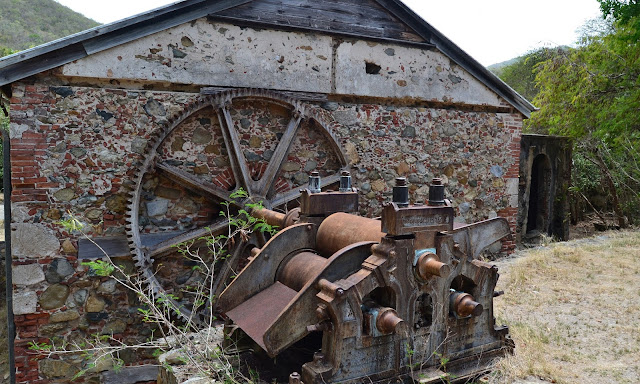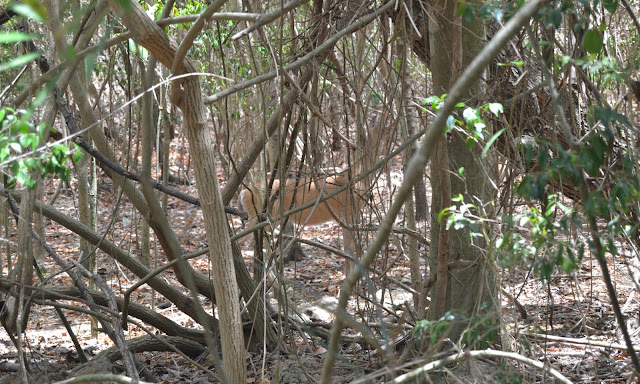We found the perfect island for us; deserted beaches, long hiking trails, mongoose to chase, and crystal clear water. The national park service took over St. John and gave it to the public. There is a $15 mooring fee per night within the park borders to help maintain the park and prevent damage to the bottom from anchors.
Over the course of 2 weeks we traveled only 6 miles along the north coast of St. John. Every bay had access to different hiking trails, snorkeling and hunting opportunities to keep us busy. After visiting a half dozen sugar mill ruins, we might get into the business.
The boiling room: the sugar cane juice would be boiled down in pots until becoming sugar crystals. Imagine working in this place in the tropics.
The Sugar Reef mill, the last operational mill on the island was outfitted with a steam engine from Glasgow Scotland to crush the cane to release the juice.
The Glasgow steam engine
Boiling pots strewn around the mill
The latest sugar mill technology. The mills also had their own rum stills where they would ferment residual cane juice and distill rum.
The steam engine turned the large bull gear via a smaller gear creating enough torque to crush the cane. Other methods to crush the cane were windmills or horse/oxen turning the crusher on a circular patch of land. This mill was finally shut down after an accident with the bull gear… not a pleasant thought.
Sugar reef bay
Deer, one of the many hunting opportunities for Bela on St. John
Old growth trees, which escaped the clear cutting can be found here and there.
Petroglyphs left from the natives who came to the island from South America. These were at a waterfall considered to be a sacred site.
Fluff from this tree were used to stuff pillows and beds. The stumps of healed branches were cut off and used as turtle decoys… to try to lure in sea turtles?
The last climb before the downhill to Maho Bay













No comments:
Post a Comment